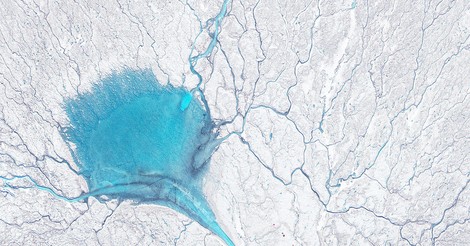Your podcast discovery platform
Curious minds select the most fascinating podcasts from around the world. Discover hand-piqd audio recommendations on your favorite topics.

piqer for: Climate and Environment Global finds Globalization and politics
I'm a freelance journalist, currently based in Madrid. I used to be a News Producer at CNBC in London before, but I thought a little bit more sun might do me good. Now I write for several news organizations, covering a range of topics, from Spanish politics and human rights for Deutsche Welle to climate change for La Marea.
Greenland Is Melting, But Not All The Water Reaches The Ocean
Prepare to be stunned by the opening of this wonderful New York Times article. They have been doing some incredibly designed pieces on climate (like this one on permafrost thawing), but this one is, so far, my favourite.
The article is about Greenland's water. As global warming advances and the northern ice cap melts, the water flows to the sea. The amount and the speed at which this process takes place is crucial to understand one of the most feared effects of climate change: the rise of the sea level. Until now, the most accepted position was that water reached the ocean very fast after defrosting. However, the scientists that feature here have found otherwise.
"The flow data, collected over 72 hours, showed that current models are overestimating the amount of runoff by 20 percent to nearly 60 percent. Were the models wrong? Or were they right about the total amount of melting, but some of the water was not running off?"
Long story short: Much of the water gets trapped in the porous ice. That is (for once) good news. It means that we might have scratched a few decades to fight against climate change before the sea rises by 24 feet (some 8 metres) if the whole ice cover disappeared.
The two authors of this story travelled to Greenland in 2015 to shadow the team of scientists as they collected their data (a trip they already wrote about). The trip, initially planned to refine and improve satellite data, ended up with findings that may modify our climate change impact projections.
This is a very interesting account of something most of us will never experience: a trip to the remote regions of the Arctic. But it's also a very interesting example of how science works. You try to improve your data, and keep doing that. And sometimes you find that the data doesn't match the theory, and you have yourself a chance to change the rules, opening the field to much (much) further investigation.
But, still, what really amazes me is the amazing opening infographic.

this is another great piq, santi, and the infografics is a great explainer, as you said. i much like the casual way they explain how good science works. this explanation would sound fairly similar if you asked a geneticist/microbiologist (like me, so this statement might be biased) how good science works, methodologically.